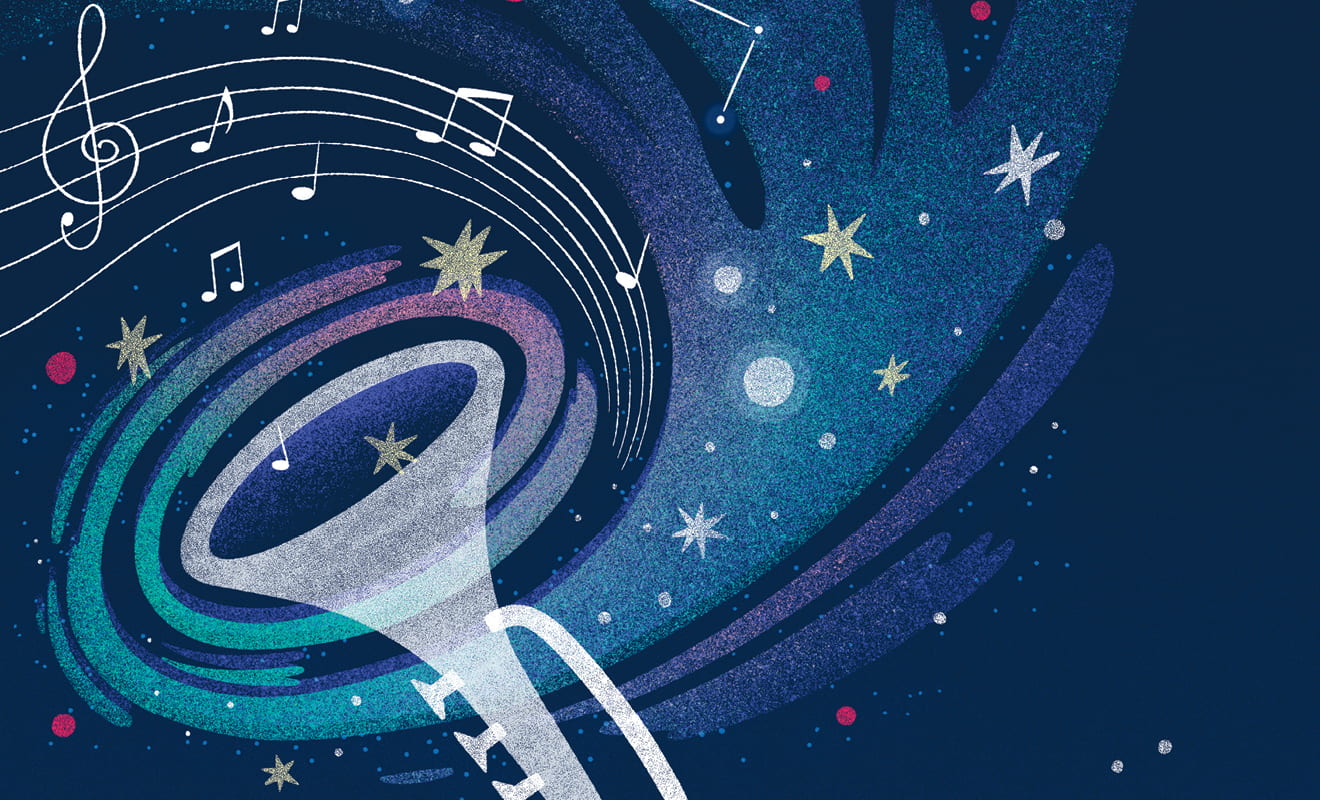Black Hole ‘Sonification’ Brings Symphony to Life
Arts & Sciences Adjunct Professor David Ibbett says he’s happiest when he’s getting to the heart of scientific concepts and bringing them to life through the language of music. It’s a way of understanding the world that he teaches in his Music and Science course, and one that informs much of his own work.
That includes his latest piece, “Black Hole Symphony,” which was performed in Hayden Planetarium at the Museum of Science in Boston this past summer. The concert was the culmination of three years of work and featured a live chamber orchestra and recorded electronic music, along with a narration and visual aspects, which were displayed on the planetarium dome.
This is art that is not only made in conjunction with science, but it also helps to communicate and share the joy of science.
Much like the performance itself, Ibbett’s composition method is unique. He uses a process called “sonification,” which involves gathering data from black holes and their sounding phenomena—traditionally displayed as a graph—and designing an algorithm to convert this data to sounds. The central sonification for the “Black Hole Symphony” is based on the electromagnetic spectrum of an active galaxy containing a supermassive black hole. Ibbett then embeds these sonifications in a larger musical piece that delivers an emotional and intellectual impact to the audience.
“This is art that is not only made in conjunction with science,” he says, “but it also helps to communicate and share the joy of science.”
In 2017 he founded a nonprofit called Multiverse Concert Series, which is a hub for these types of collaborations between music, art, and science. Three years ago, he met Anna Barnacka, an astrophysicist at the Center for Astrophysics at Harvard who was trying to sonify the jets of plasma from black holes.
“We discovered this shared interest of sonifying data to see if you can learn more about it by listening to it. Soon the idea of a narrative piece came together, and we thought about doing a symphony—the piece is a classical symphony at heart, with melodic themes and five movements,” he says. “The metaphor in the piece is that each component of the black hole galaxy is like a musical instrument in an orchestra, and the black hole is the conductor telling everyone what to do and influencing them, silently.”



